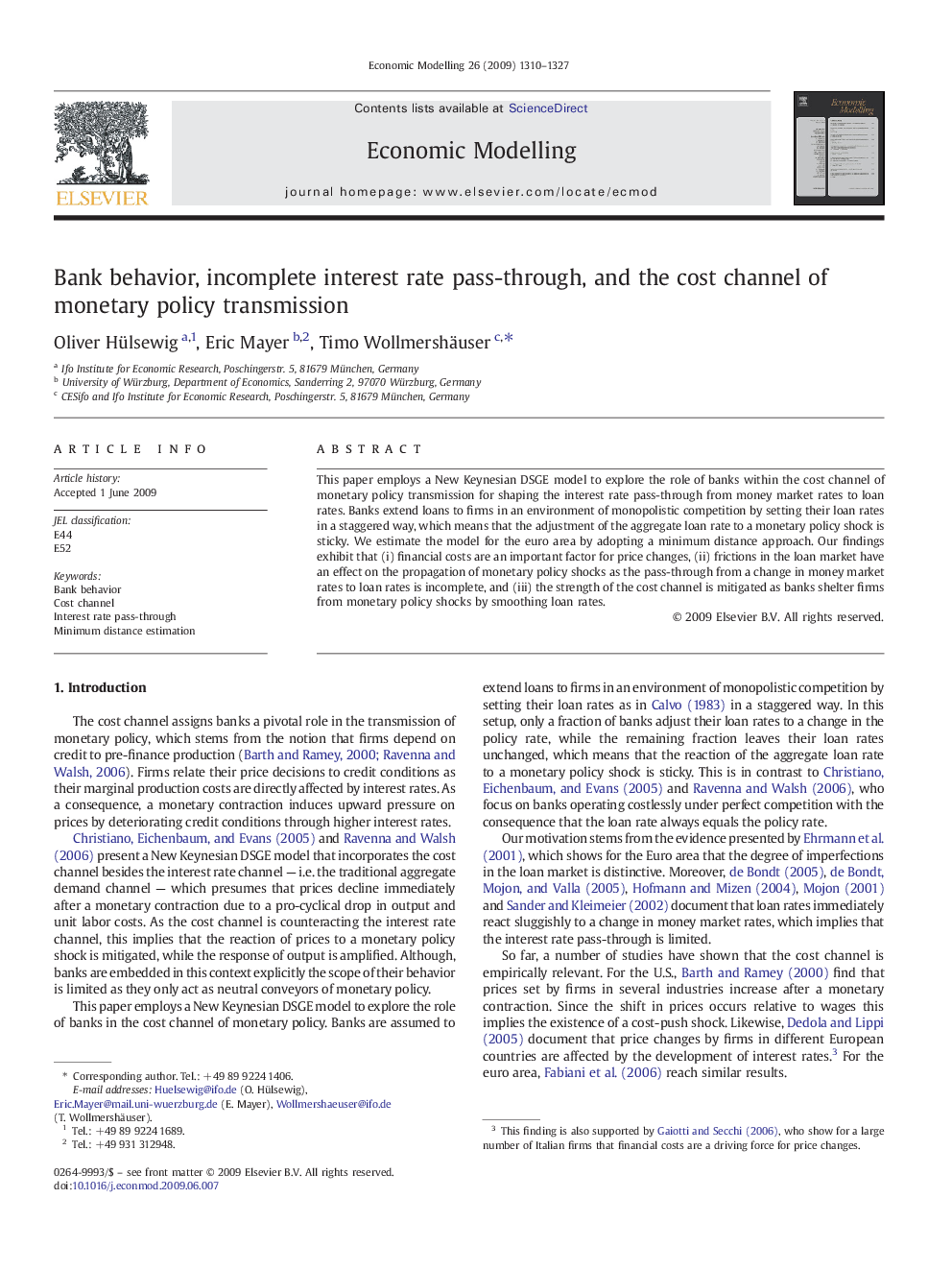| Article ID | Journal | Published Year | Pages | File Type |
|---|---|---|---|---|
| 5055591 | Economic Modelling | 2009 | 18 Pages |
Abstract
This paper employs a New Keynesian DSGE model to explore the role of banks within the cost channel of monetary policy transmission for shaping the interest rate pass-through from money market rates to loan rates. Banks extend loans to firms in an environment of monopolistic competition by setting their loan rates in a staggered way, which means that the adjustment of the aggregate loan rate to a monetary policy shock is sticky. We estimate the model for the euro area by adopting a minimum distance approach. Our findings exhibit that (i) financial costs are an important factor for price changes, (ii) frictions in the loan market have an effect on the propagation of monetary policy shocks as the pass-through from a change in money market rates to loan rates is incomplete, and (iii) the strength of the cost channel is mitigated as banks shelter firms from monetary policy shocks by smoothing loan rates.
Related Topics
Social Sciences and Humanities
Economics, Econometrics and Finance
Economics and Econometrics
Authors
Oliver Hülsewig, Eric Mayer, Timo Wollmershäuser,
